Abstract
Humans derive many utilitarian benefits from the environmental services of biotas and ecosystems. This is often advanced as a prime argument to support conservation of biodiversity. There is much to be said for this viewpoint, as is documented in this paper through a summary assessment of several categories of environmental services, including regulation of climate and biogeochemical cycles, hydrological functions, soil protection, crop pollination, pest control, recreation and ecotourism, and a number of miscellaneous services. It is shown that the services are indeed significant, whether in ecological or economic senses. Particularly important is the factor of ecosystem resilience, which appears to underpin many of the services. It should not be supposed, however, that environmental services stem necessarily and exclusively from biodiversity. While biodiversity often plays a key role, the services can also derive from biomass and other attributes of biotas. The paper concludes with a brief overview assessment of economic values at issue and an appraisal of the implications for conservation planning.
Full text
PDF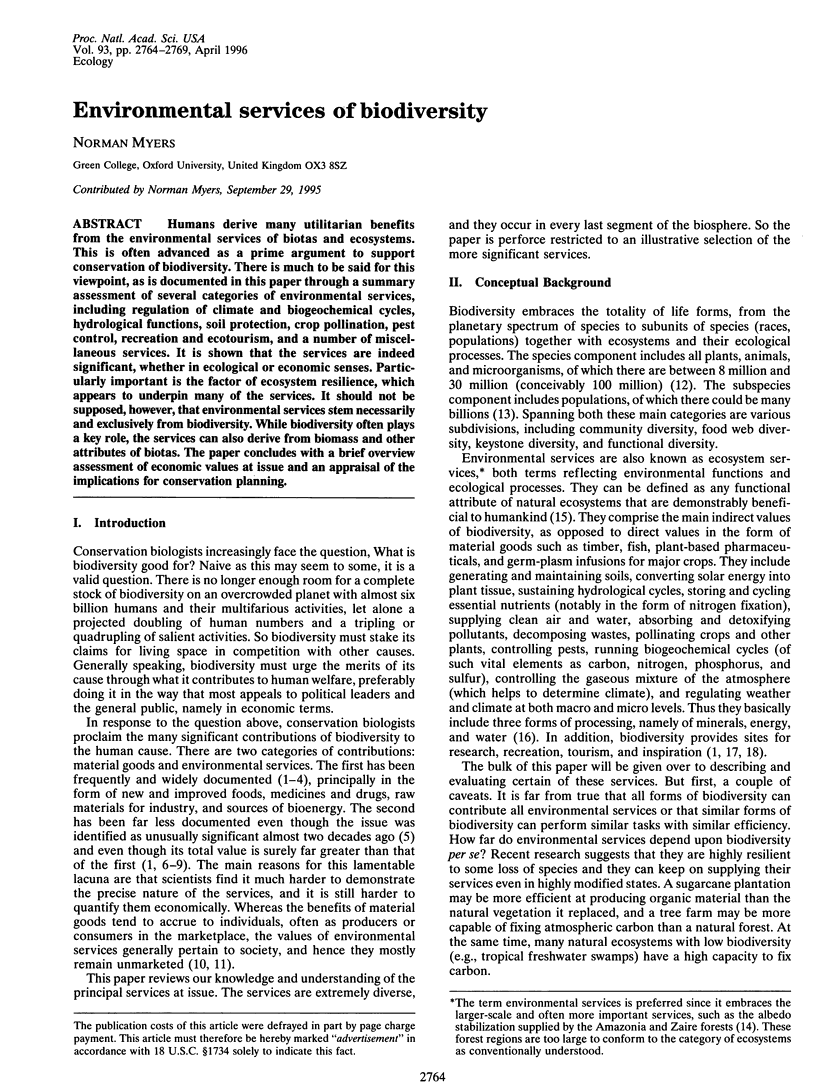
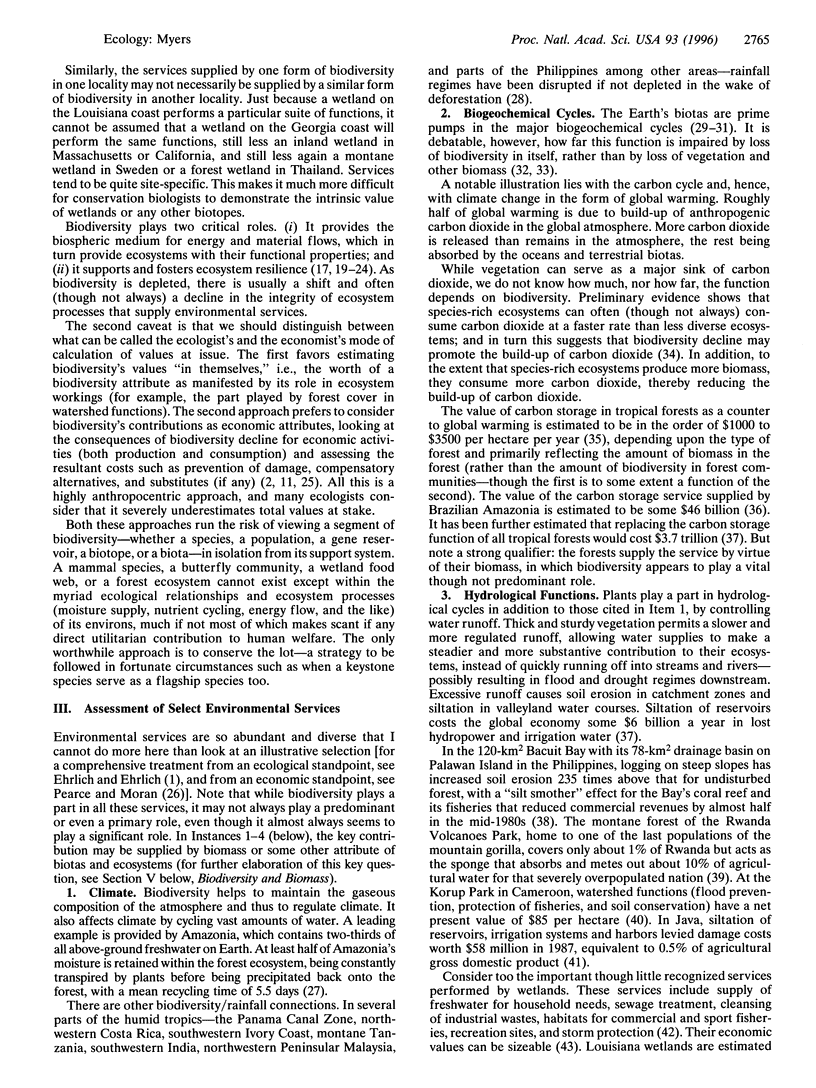
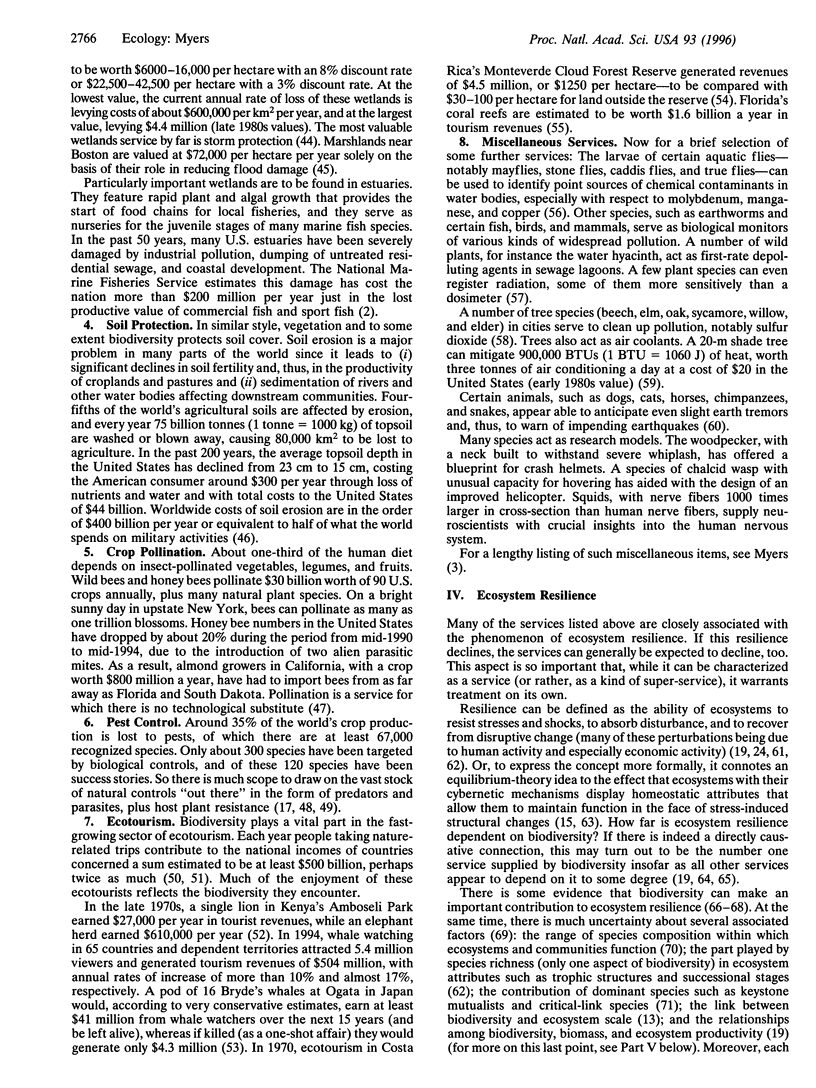
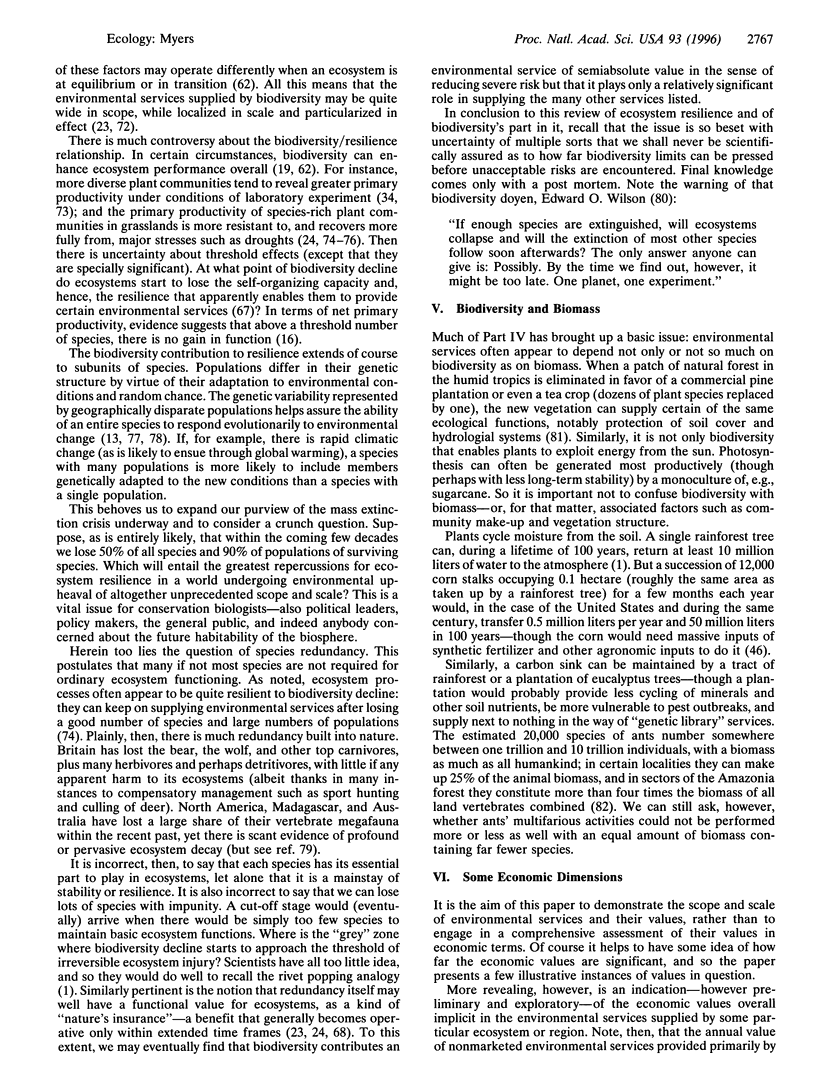
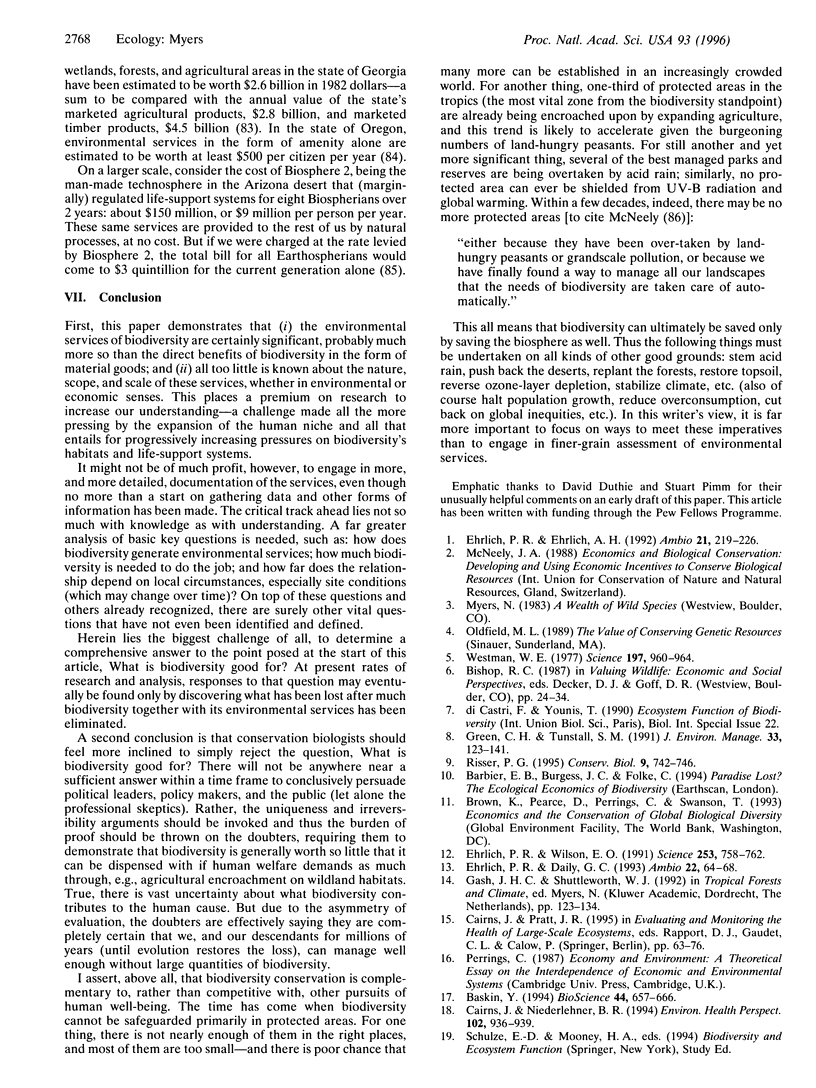
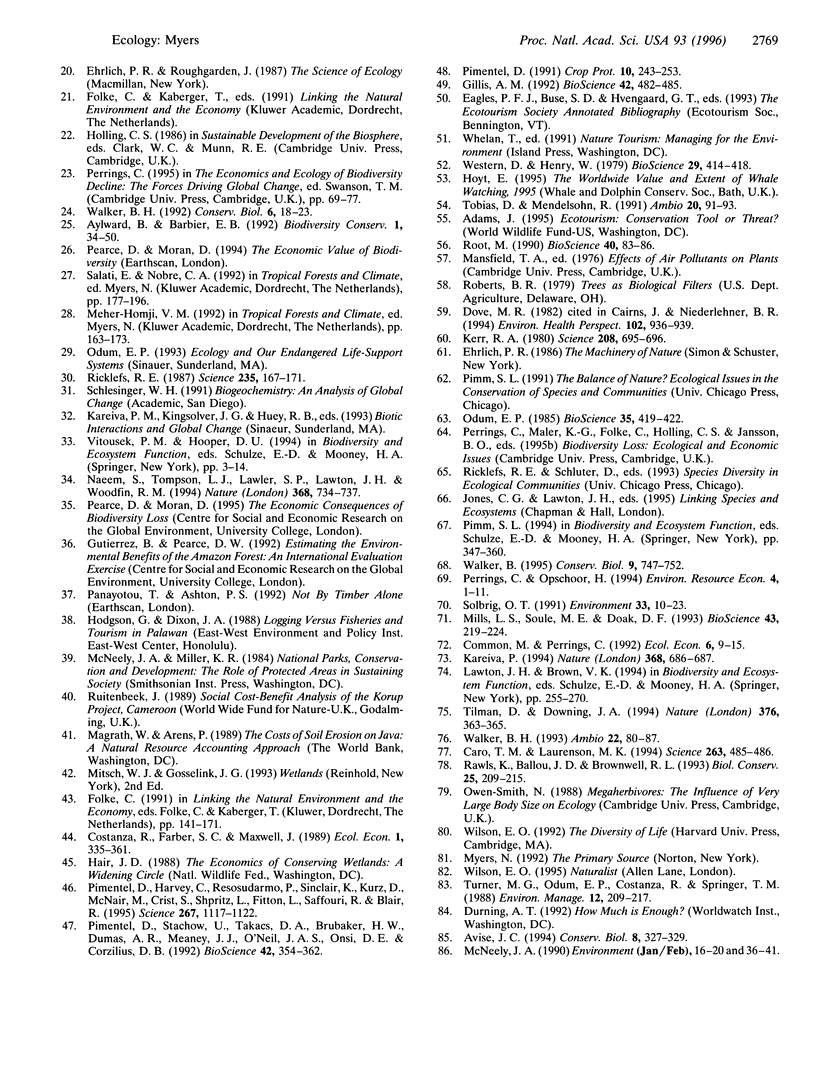
Selected References
These references are in PubMed. This may not be the complete list of references from this article.
- Cairns J., Jr, Niederlehner B. R. Estimating the effects of toxicants on ecosystem services. Environ Health Perspect. 1994 Nov;102(11):936–939. doi: 10.1289/ehp.94102936. [DOI] [PMC free article] [PubMed] [Google Scholar]
- Cairns J., Jr, Niederlehner B. R. Estimating the effects of toxicants on ecosystem services. Environ Health Perspect. 1994 Nov;102(11):936–939. doi: 10.1289/ehp.94102936. [DOI] [PMC free article] [PubMed] [Google Scholar]
- Caro T. M., Laurenson M. K. Ecological and genetic factors in conservation: a cautionary tale. Science. 1994 Jan 28;263(5146):485–486. doi: 10.1126/science.8290956. [DOI] [PubMed] [Google Scholar]
- Ehrlich P. R., Wilson E. Biodiversity studies: science and policy. Science. 1991 Aug 16;253(5021):758–762. doi: 10.1126/science.253.5021.758. [DOI] [PubMed] [Google Scholar]
- Kerr R. A. Quake prediction by animals gaining respect. Science. 1980 May 16;208(4445):695–696. doi: 10.1126/science.208.4445.695. [DOI] [PubMed] [Google Scholar]
- Page R. C., Hattersley A. T., Levy J. C., Barrow B., Patel P., Lo D., Wainscoat J. S., Permutt M. A., Bell G. I., Turner R. C. Clinical characteristics of subjects with a missense mutation in glucokinase. Diabet Med. 1995 Mar;12(3):209–217. doi: 10.1111/j.1464-5491.1995.tb00460.x. [DOI] [PubMed] [Google Scholar]
- Pimentel D., Harvey C., Resosudarmo P., Sinclair K., Kurz D., McNair M., Crist S., Shpritz L., Fitton L., Saffouri R., Blair R. Environmental and economic costs of soil erosion and conservation benefits. Science. 1995 Feb 24;267(5201):1117–1123. doi: 10.1126/science.267.5201.1117. [DOI] [PubMed] [Google Scholar]
- Ricklefs R. E. Community diversity: relative roles of local and regional processes. Science. 1987 Jan 9;235(4785):167–171. doi: 10.1126/science.235.4785.167. [DOI] [PubMed] [Google Scholar]
- Westman W. E. How Much Are Nature's Services Worth? Science. 1977 Sep 2;197(4307):960–964. doi: 10.1126/science.197.4307.960. [DOI] [PubMed] [Google Scholar]


